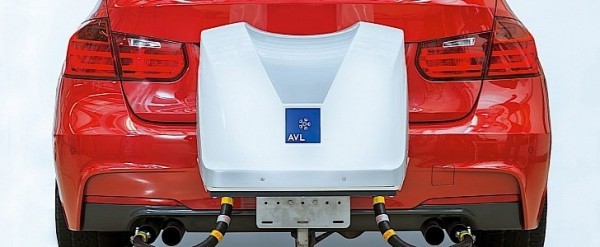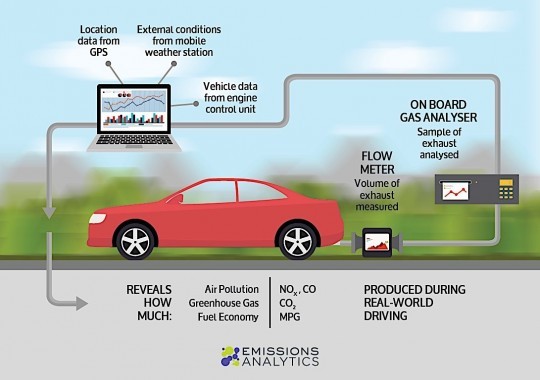
Although still partially using dynamometer tests, WLTP will also introduce a more deepened use of the Real Driving Emissions (RDE) test procedure. RDE is supposed to provide a more accurate measurement of emission values in real-world driving conditions.
To be able to perform the RDE tests, carmakers will have to rely on special equipment mounted inside or outside the car. This special equipment is called Portable Emission Measuring System, or PEMS, and is essentially used to measure the levels of emissions while the car is being driven on various road surfaces, at different temperatures, altitudes and so on.HISTORY
PEMS have been around since the early 1990s, being developed by the Warren Spring Laboratory in the UK. They were used to measure on-road emissions as part of the country’s Environment Research Program.
In the U.S., the creation of PEMS is attributed to Leo Breton from the Environmental Protection Agency (EPA) in 1995. His device was called ROVER, or Real-time On-road Vehicle Emissions Reporter. ROVER was supposed to show regulators whether laboratory emission tests have a corespondent in real life driving.
Of course, ROVER soon proved that the measurements from the lab differed from those taken on the road. ROVER is responsible for the first ever vehicle recall on environmental reasons: 470,000 Cadillacs had to be sent to service by General Motors after the machine found they were emitting up to 10 grams of CO2 per mile with the air conditioning turned on.
But the biggest achievement of the ROVER PEMS is the fact that a variant of it managed to catch Volkswagen lying about the emission levels of its cars and triggered the biggest scandal in automotive history, the ongoing saga that is known by the name of Dieselgate.
Despite having used the ROVER for various purposes until 2001, the EPA failed to create a set of rules governing the use of PEMS for on-the-road emissions testing.
Since the first versions of PEMS were created, the number of producers developing such instruments have drastically increased.
 WHAT DOES IT DO
WHAT DOES IT DO
PEMS is currently being used to monitor and report the level of emissions of the tested cars. For Europe, RDE tests and the use of PEMS means that cars will have to comply with stricter regulations.
In September 2017 RDE step 1 took effect, requiring a NOx maximum level of 2.1 for all new car types. RDE step 2, with a NOx maximum level of 1.0 plus an error margin of 0.5, will be implemented in 2020.
The maximum level of NOx emissions are called conformity factors and are the cap by which the Euro 6 NOx emission limit would be allowed to be exceeded in real-world driving.
PEMS are installed outside of the vehicle, on a tow bar or on a platform, or in the trunk of the car. When in use, PEMS takes into account the following factors: the location of the car, based on data provided by a GPS system, the external weather conditions as provided by an external weather station and vehicle data from the engine’s control unit.
While keeping track of these factors, PEMS is used to determine the emission levels of the car, including its fuel economy, while a real driver pilots the car on real roads.
The results of the tests are compared with those of other cars from the same family (based on several factors, including propulsion type, fueling method or exhaust gas recirculation).
The introduction of WLTP and RDE will not however solve the problem of accurately rating the emission levels of a car in any given condition. Even if the testing procedures are harmonized, the results of the testing will have to comply with emission standards that are different from region to region.
No testing procedure of any kind, be it bench or real-life, will be able to take into account the complex of situation resulting from the individual driving style of the drivers, changes in the type of fuel used, and so on.








